How to Make a Professional Job Portfolio for Your Next Interview

It’s easy to claim you’re great at working with others, but what does that really mean? Even if an employer is willing to assume you’re telling the truth, it’s a claim that communicates almost nothing and does little to separate you from others who also say they work well with others or are great at generating ideas.
With that sentiment in mind, understanding how to make a professional portfolio for a job interview can provide more substance to your claims. A job portfolio provides evidence to the claims you made in your resume and cover letter regarding your candidacy and backing backs them up with tangible proof of your skills, both concrete and transferable.
To give you some pointers in building an effective interview portfolio, we’ll take a look at a few interview portfolio examples and give you some best practices to follow when crafting your own and mistakes to avoid. Once you understand how to prepare and organize a portfolio, you can reap the benefits on virtually any kind of career track and show your work -- and yourself -- in the best light.
Why Should You Make a Job Portfolio?
The claims and credentials made on your resume should be able to be proven. The more you know about someone, the more you’ll be able to gauge their abilities and personality. It’s difficult to describe someone’s level of talent without watching them perform, but it’s not impossible if you can provide prospective employers with the right details.
Some career paths require creating professional portfolios. For an aspiring web designer or illustrator, it’s essential to have a catalog of finished work. For people in fields that don’t readily lend themselves to a set of creative deliverables (such as insurance careers), there are still ways to demonstrate visual proof of your ability and build a compelling career portfolio. For example, you might link to an annual report about company success, and then explain your role in the project and how you helped drive those results.
It's not hard to see the value of having your professional portfolio prominently appear in the search results for your name. With the right integration between your portfolio, LinkedIn, Facebook, Twitter, and Instagram, you can drastically improve the visibility of your portfolio even if you have a common name.
Looking for other ways to land your next job? Check out MyPath’s Career Planning Tools or discover your next career move by taking our Career Wizard quiz.
How to Prepare an Interview Portfolio: Step-by-Step
Step 1: Keep Work Portfolios Short and Simple
An effective job portfolio isn’t going to document everything you’ve ever done. Even if you’ve done great work across the board, if prospective employers are faced with too much information, they can easily get lost or focus on the wrong things. Select only your best work or projects that show your greatest, most marketable talents.
Likewise, navigating through your portfolio should be simple. When deciding how to organize a portfolio for a job interview, present your past experiences in a manner that’s as straightforward as you can manage. That means sticking to one page per project, or even one page for every project. Detail is important, but those details must be well-organized and concise.
Step 2: What to Include in Your Interview Job Portfolio
People in creative career paths such as copywriters or visual designers have the good fortune of being able to make effective portfolios with ease and without much concern as to what to include in their professional portfolio. However, for people working outside of visual or creative fields, it’s not always obvious what to include in your portfolio when preparing for a job interview
The answer to that question will change depending on your career goals. However, a good place to begin is with performance evaluations and / or any content you may have created for a job in the past. Even if all you have to work with is hard data, you can make that data far more digestible by turning it into a visualization. Remember: you’re trying to highlight your background while distinguishing yourself from others.
Also important to note is that a job portfolio isn’t just another version of your resume. Similar to a cover letter, effective portfolios which are well-prepared and organized are an opportunity to provide clues about who you are on a personal level. Employers might want to gauge how well you’d fit in with their team. If nothing else, personality can help you stand out.
Step 3: Provide Contact Information
No matter how good you look on paper, if someone can’t find your contact information, they’ll give up on trying to reach you. Potential recruiters can’t contact you if you don’t keep that information visible and up-to-date. This may seem like a small oversight, but similar to forgetting to write the delivery address on a package, it’s often the small details that matter most when making your portfolio look good.
While you’re updating your work portfolio, make certain you’re not using sensitive client information -- publicly or otherwise. If you’re not sure whether you’re violating a non-disclosure agreement, your best bet is to ask. And if you want to prevent small-but-critical mistakes from turning into career-derailing problems, it might be worth taking a moment to check out MyPath’s Career Resources.
Career Portfolio Examples
Good career portfolio examples aren’t hard to find. If you’re looking for one, take a look at developer Devon Stank.His portfolio offers easy and intuitive navigation, enabling an easily digestible recap of his past experience. And if you don’t feel like browsing around, he’s even prepared a video to make the introduction easier for you. But even great career portfolios can be improved. For example, it might help if the specific skills listed on Devon’s resume contained links to relevant examples on his website.
Another professional portfolio example worth checking out belongs to content writer and creative strategist Callie Schweitzer. Her presentation is direct, yet descriptive. Even if you only read a few sentences, you come away with a sense of Callie’s personality.
Yet, you might be able to spot some room for improvement. For example, her introduction would be far more readable if it was broken into multiple paragraphs. It’s supposed to be a succinct version of her biography, but the text is nearly half as long as the full version.
When creating your own professional portfolio, learn from the best, but think about ways you can improve upon their work to create something uniquely yours.
Get the Most Out of Your Professional Portfolio
Just because you worked somewhere doesn’t mean you were great at your job. When employers are trying to figure out who to hire, portfolios can serve as a vivid demonstration of your abilities. They’re scarcely harder to construct than a resume and can provide employers the confidence they need to go forward with a hiring decision in your favor. Hopefully this introduction on how to make a portfolio for your next job interview will give you the right tools to get started!
Looking for other ways to land your next job? Check out MyPath’s Career Planning Tools.
